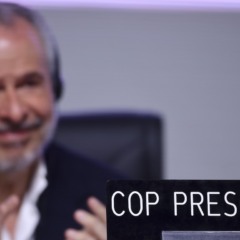
On Monday, the Brazilian government unveiled Eco Invest Brazil, an ambitious initiative designed to attract private foreign investment into the nation’s burgeoning green economy. This announcement marks a strategic move to overcome one of the key barriers deterring foreign investment: the volatility of the Brazilian real.
Treasury Chief Rogério Ceron highlighted the significant gap in private sector funding for green projects within Brazil, noting a mere 6% contribution, starkly lower than the 14% seen in other emerging markets and the 81% in developed nations.
“Emerging economies are where the significant opportunities to reduce greenhouse gas emissions lie, making it crucial to draw in private capital,” Ceron emphasized.
Ilan Goldfajn, President of the Inter-American Development Bank (IDB), pointed out the previously insurmountable challenge of high currency hedging costs, emphasizing the imperative to find solutions amidst the pressing climate crisis. “Should this initiative prove successful, and I believe it will, it could serve as a global model,” Goldfajn remarked, underscoring the universal nature of the challenge.
The financial innovation was praised by climate finance experts gathered in São Paulo for the G20 meeting. “It is super important. Let’s hope it can be replicated and scaled elsewhere”, said Mark Carney, former governor of the Bank of England and head of the Glasgow Financial Alliance for Net Zero (Gfanz).
A notable portion of the program, valued at $3.4 billion, was first introduced at COP28, focusing on reducing the costs of foreign exchange protection for green investments in Brazil through the IDB’s assistance.
By capitalizing on the IDB’s top-tier risk rating, the program aims to offer cost-effective currency hedging options. These instruments, secured by the IDB with international banks, will be relayed to the Brazilian Central Bank and subsequently to local financial institutions, ensuring the Central Bank remains free of risk and does not dip into its balance sheet or national reserves, according to Central Bank President, Roberto Campos Neto.
Further bolstering the initiative, the IDB and the World Bank have committed to lending $2 billion and $1 billion, respectively, to fortify the Climate Fund, Brazil’s main climate action financing vehicle, fueled by donations from countries and contributions from the Brazilian Treasury and managed by the National Bank for Economic and Social Development (BNDES).
These funds, potentially supplemented by future government contributions, are earmarked for four novel credit lines designed to mitigate investment risks in Brazilian projects and enhance the appeal to foreign private investors.
These credit lines address various project phases, from initial structuring and liquidity risk management to long-term currency protection.
. The first one is a blended finance line to supplement international market funds for green projects, reducing capital costs and currency risks for borrowing entities, since the financing will be denominated in local currency. Financial institutions capable of leveraging the largest volume of international private resources will have access to this line.
Projects aligning with Brazil’s Ecological Transformation Plan, particularly those in technological advancement, bioeconomy, energy transition, and green infrastructure, will be eligible.
The line has a term of up to 25 years and a grace period of up to 5 years. The interest rate will still be defined by the National Monetary Council (CMN).
. The second is an emergency liquidity line to solve temporary cash shortages resulting from currency fluctuations. This is especially applicable to ventures that have a predictable future revenue indexed to inflation, such as infrastructure projects, that may suffer momentary liquidity shocks due to exchange rate fluctuations.
. The third line aims to foster the development of long-term currency hedging products for financing and capital investment in green projects by local financial institutions (in addition to those that will be provided by the IDB).
Here, the idea is that the credit line is used by the local bank to reduce its capital cost and capital provision requirements by offering currency protection instruments (swaps and options) for investment in green projects.
In essence, the bank can take these resources at a reduced cost and invest them, using the return on this investment to create a reserve that will help cover its costs and risks, including the borrower’s default risk.
. The fourth and final line aims to increase the pipeline of quality green projects in the country. Banks that create products to finance the structuring of projects can use this credit line as funding. The repayment term is up to 12 years, with a grace period of up to 7 years, and the interest rate will still be set by the CMN.
Ceron estimates this credit scheme could enable annual disbursements ranging between $1 billion and $2 billion.
Projects must align with the Ecological Transformation Plan and meet the Climate Fund’s criteria. The Finance Ministry is still developing a sustainable asset taxonomy for Brazil.
Governance mechanisms will ensure thorough preliminary and outcome-based project verifications.
A forthcoming executive order will formalize the program, amending the Climate Fund’s structure to accommodate these credit lines and incorporate financial derivatives for risk mitigation. The Treasury will oversee the credit lines’ regulation, resource allocation, and monitoring.
The British government’s involvement adds an international dimension, contributing $1 million towards independent verification of the program’s monitoring and results, underscoring the global cooperation at play in Brazil’s green finance strategy.





